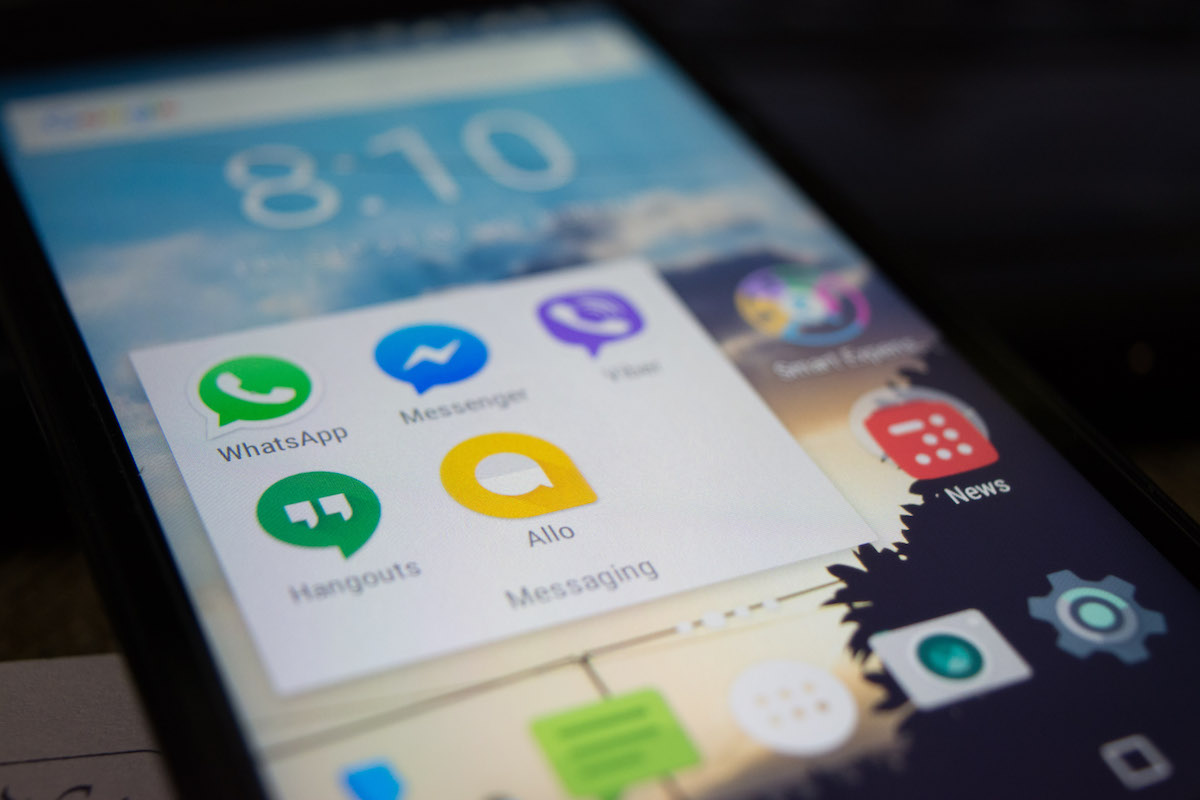I saw a recent article, about Amazon getting onto the instant messaging app bandwagon.
My excitement level was about as high as seeing my monthly utility bills arrive in the mail.
Honestly, my first gut reaction when I read this was, WHY?
That is, WHY did Amazon feel the need to create a messaging app? It’s not exactly like we’re facing a drought of software applications that handle two way instant messaging.
Here’s what’s currently available on most modern smartphones these days …
1. Google Allo
2. Google Duo
3. Google Hangouts
4. Google Voice
5. WeChat
6. Apple iMessage
7. Apple FaceTIme
8. Kik
9. Snapchat
10. Skype
11. Yahoo Messenger
12. Viber
13. Line
14. Tango
15. WhatsApp
16. Telegram
17. Hipchat
18. WebEx
19. Kakao
And this is probably just scratching the surface of the total number of messaging apps available for smartphone and other mobile devices.
So what, variety is good, right? And it’s a free country, and competition keeps everyone hungry! After all, the best kind of innovation comes from lots of hungry organization vying to create the best of breed products!
However, this wide variety of choices of messenger apps creates a peculiar problem.
Say you choose WhatsApp, which is a very popular messaging app especially favored by countries outside the United States, where traditional SMS texting is still very costly.
It’s one of the major reasons why a lot of these apps came about in the first place. For the longest time, telecom carriers like AT&T and Verizon had a LOT of power. Before Apple introduced the iPhone, they controlled what phones could operate on their network. They also controlled the operating system and all underlying software that ran on their phones.
Because of their tight control over their hardware and software ecosystem, they could do anything to protect their high profit margins on the phones they allowed to work on their network, as well as controlling what kind of software apps were allowed.
And for the longest time, one of the highest profit margin services they charged for was SMS text messaging. They might give you a small number of initial free text messages to send and receive, but beyond that, you’d get charged an arm and a leg for anything beyond those initial free messages.
As a matter of fact, the actual cost of sending an SMS text message over a telecom carrier network was practically nil, yet that didn’t stop telecoms from charging exorbitant rates for the privilege of SMS texting. Why? Simply because they could.
And the LAST thing a telecom would do to ruin those high profit margins, is allow their customer base to install a messaging app to bypass SMS texting.
It wasn’t until Apple released their smartphone to the world in 2007, that they began to wrest control of the hardware and software away from the telecoms. And one of the first milestones they accomplished after the initial release of their iPhone, was to create a custom messaging app called iMessage, which bypassed the SMS text messaging protocol which carriers have charged an arm and a leg for the privilege of SMS texting.
Many other software development houses soon got on the same bandwagon, releasing their own messaging apps to bypass expensive SMS text messaging charges.
It solved a big problem for consumers, who got tired of getting nickel and dimed to death with SMS texting charges on their phone bill.
But as it solved one problem, it created another huge problem.
As bad as SMS texting was abused by telecom carriers, it had one thing going for it.
SMS texting is an international communications protocol that every mobile smartphone on the planet currently supports.
It doesn’t matter what kind of mobile smartphone device you use. As long as you have an active phone number activated on a carrier voice/data plan, you have the ability to send an SMS text message to any other person on the planet with their own smartphone device.
Well, it’s been estimated that by 2020, there will be around 6.1 BILLION people on the planet with smartphones that have the capability to send SMS text messages to each other.
That is the true power of technology standards. It creates an atmosphere of mass adoption. And the more people who use a particular technology standard, the more appealing it becomes to people who haven’t yet adopted the standard.
The new problem which was introduced by all these alternative messaging apps that helped users bypass SMS texting, there’s no underlying universal messaging standard to replace SMS texting.
So that means that if I use WhatsApp, the person on the receiving end of my message needs to have WhatsApp installed on their smartphone as well. And the software developers behind WhatsApp need to create specialized versions of WhatsApp to work on all the major smartphone platforms like Android, iOS, and Windows Mobile.
It gets even worse when you use something like Apple’s messaging technology like iMessage and FaceTime.
Not only does the person on the receiving end need to have iMessage and FaceTime on their smartphone, these applications don’t exist on any other smartphone platforms other than the iPhone and iPad.
Apple primarily makes the lion’s share of their revenue from sales of their hardware products, so they’re going to make sure their software doesn’t run on anything other than Apple hardware.
The lack of a universal messaging protocol to replace the SMS text messaging protocol is the primary reason why there are gazillions of messaging apps and why the sender and receiver of a messaging app, must both be using the same exact messaging application to communicate with each other.
It’s clear why we desperately need a universal messaging protocol.
There are other clear examples of technology standards that have been the reason behind their mass adoption.
The TCP/IP standard is the backbone behind which all internet endpoints can communicate to each other.
The HTTP standard allows any web browser to load rich and interactive web pages.
The SQL standard allows you to query any relational database from any manufacturer from Microsoft, Oracle, or any other number of database vendors.
SOAP and XML are important messaging and data protocols for universal web service communication.
REST, E-mail, JSON, CSS, the list goes on and on.
All these technology standards have allowed for mass adoption.
Technology that doesn’t adhere to open standards usually dies on the vine, either a slow or quick death … Adobe Flash and Silverlight anyone?
Is there any hope for a universal messaging protocol?
Google has been pushing for a new messaging protocol called Rich Communication Service (RCS) to replace the SMS (Short Message Service) protocol.
The RCS protocol has much more capability than SMS, which only allows you to send and receive text and pictures.
RCS allows you to send and receive richer multimedia formats including videos, sound and music files.
But in order for it to truly be universal, you will need the buy-in and cooperation of other major vendors besides Google…this would mean Apple and Microsoft.
As much as I wish these major corporations would cooperate and agree on a much need universal messaging protocol standard, it’s going to be an uphill battle.
Anyone who’s ever tried to herd a bunch of cats knows what I’m talking about.
ICanHazUniversalMessaging?
Meow?




